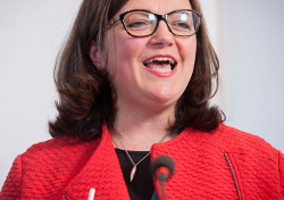Over 15 years in the charity sector I have been involved in responding to stories including fires, armed sieges, deaths - the list goes on.
As the Oxfam story develops and their approach swings from atoning to being the victim, I thought it might be interesting to give you an amalgam, made-up, insight in to how crises develop and how charities generally respond.
My aim is to help you consider how you might respond if this should happen to your organisation. Names and circumstances are fictitious, responses are real.
Are you sitting comfortably? Once upon a time…
It is a Friday night, the social media team are turning off Twitter, the media manager has left for the weekend and directors are working from home.
As you turn off your computer, the phone rings. It is a journalist you don’t know, asking if you’d like to comment on a story about an individual who claims they have been harmed by a staff member. The journalist asks for a response in an hour.
After getting down all the details, you hunt around for the crisis comms plan and the out of hours calling rota. The rota is not up to date, and the first three colleagues you call have ‘number unreachable’. Eventually you speak to a director, usually in IT or finance. The crisis has now been running for 45 minutes.
The director does not mention the out of hours crisis plan, but does suggest you check the client database to see if you can find out more about the alleged victim. You point out you don’t have access to this. Her next suggestion is to contact the director for services. And absolutely not to make any comment to the media. The hour mark passes.
At this point, you decide to email the leadership team and within a few minutes, have four separate emails back, each suggesting slightly different handling strategies. None of which are in line with the pre-agreed crisis comms plan. Each offers to ‘be available on the phone’. Despite a suggestion of physically meeting up at the office, this is not taken up.
You speak to the director for services and she agrees to look into this case, and what action has been taken under the safeguarding process. She also says that she will be alerting your solicitors.
The solicitors are almost certainly a charity specialist practice or a mid-sized regional firm, mostly without any sort of national crisis handling experience. As such they are rarely thinking about the intersection of public affairs, media, social media and legal liability – merely the final part. (For balance, some are brilliant in this case).
The phone rings again and it is a researcher for the alleged victim’s MP. He wants to find out what you know about the case. You say you will be issuing a statement shortly, which you will share with them.
Right, so pause here. What lessons can we derive so far?
- Crises will always break at the most inconvenient times. This is an immutable law.
- Not everyone really knows or appreciates the importance of crisis planning. For many it is a box-ticking exercise, rather than an effort in ‘keeping the saw sharp’.
- Everything in a crisis will run at double fast and double slow. Double fast in the expectations on you from others. Double slow in your organisation’s ability to respond.
- While individuals often understand well a single facet of a charity crisis, few understand the vortex that can be created when media, political engagement, social and legal intersect.
- Crises demand a team come together, physically, as soon as possible. Delaying here will only exacerbate the impact.
The services director texts the other directors that there were allegations but that these were not followed up. No-one knows why. Two directors call you to say they will be in the office in 60 minutes.
The journalist and MP email you to find out what is going on with the statement. You promise it will be forthcoming; they are unhappy but agree to wait.
At this point, the first Tweets start appearing. Your social media person calls you to say they are leaving the pub to come back to the office.
The crisis team meets. The crisis broke three hours ago and it is now 8pm. The team have not eaten. External stakeholders are chomping at the bit for comment. Eventually a bland, reactive statement is put out, agreed by the legal team, and the team goes home at 10pm.
What happens next
The next morning, the story is in a number of national media outlets. A political blog is also carrying this, linking it to lack of governance in charities.
Social media is going in to meltdown, @’ing your charity with questions, all of which are being pointed towards your short, reactive statement.
The media team are being inundated with requests to interview the CEO, who is not a fan of media work and is wondering whether the chair could step up?
The story is the only thing staff are talking about and major donors are calling the philanthropy team to get the inside scoop. Despite this, the crisis team has been kind of disbanded and is now a couple of directors huddling with the comms director.
Let’s end the scenario here. What can we learn?
- When you look at almost any situation, there will be elements that in retrospect will appear worse than perhaps at the time. Some deservedly so, others through stupidity, rather than malign intent.
- Once the story is out, the emotional and ethical ‘lens’ will be applied as much or likely more than the purely factual one. Beneficiaries, supporters, journalists feel things – and a purely fact based response (while often legally safest), can make the organisation seem distant, cold and uncaring.
- You will notice that in this example, no effort is made toward the alleged victim and the support they need. It is about reputation management. This is a clear learning whereby reaching out and offering support (and preventing further harm) to the victim, even if by a trusted intermediary, can and should be a key part of any strategy.
- Crisis teams are, in my experience, often too quickly disbanded. They need to be kept going and think broadly about stakeholder engagement, listening and communication – not just organisational protection.
I have also seen many examples where crises have been handled brilliantly, where victims and families have been contacted immediately, where directors have made themselves professionally and personally available to the families for months afterward, where media work has been about genuine contrition and learning and where, as a side effect, reputational harm has been limited.
Thinking about this whole made up scenario key lessons are to look after people first and treat them how you’d like to be treated yourself. Deal with the crisis early, as a team, and don’t disband too soon.
Lessons to learn
In the aftermath, the standard media response for charities is to talk of learning lessons, but what should this mean? Learning lessons should include:
- Looking at the people, processes and systems that led to the crisis
- Understanding the response systems and how they impacted the crisis handling
- Developing and nurturing the skills, knowledge and capability of the crisis team
- Considering how you will tell your story, in a multi-channel world, where emotions are just as important as facts
- Understanding how you will prevent this in the future
Crises are draining and exhausting for the staff involved. My final learning is to remember to look after them, support them, and thank them. Remember, charities march on morale and pizza.
Patrick Olszowski is the founder of Outrageous Impact Ltd, an innovation consultancy. This piece originally appeared on his website here.
|
Related articles












